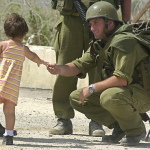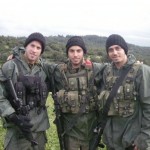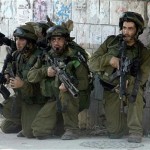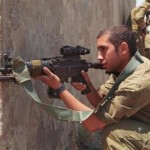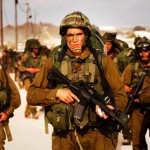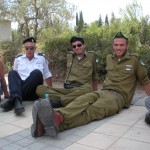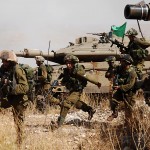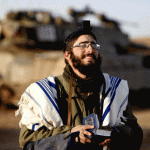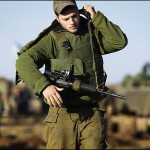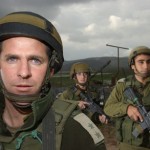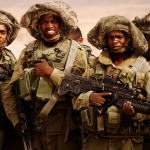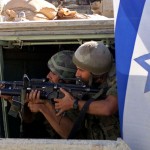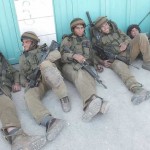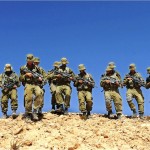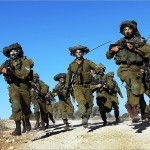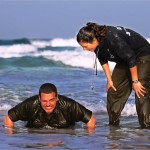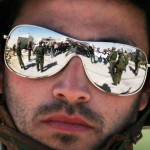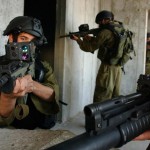
Men In The Israel Defense Forces
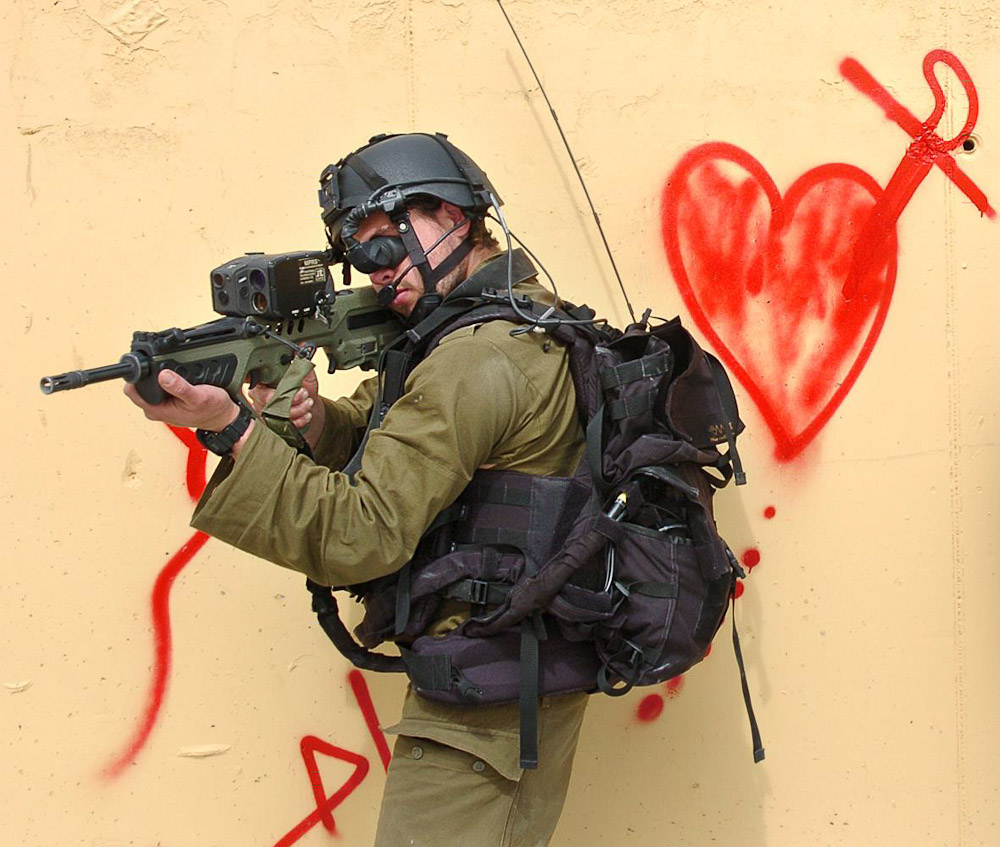
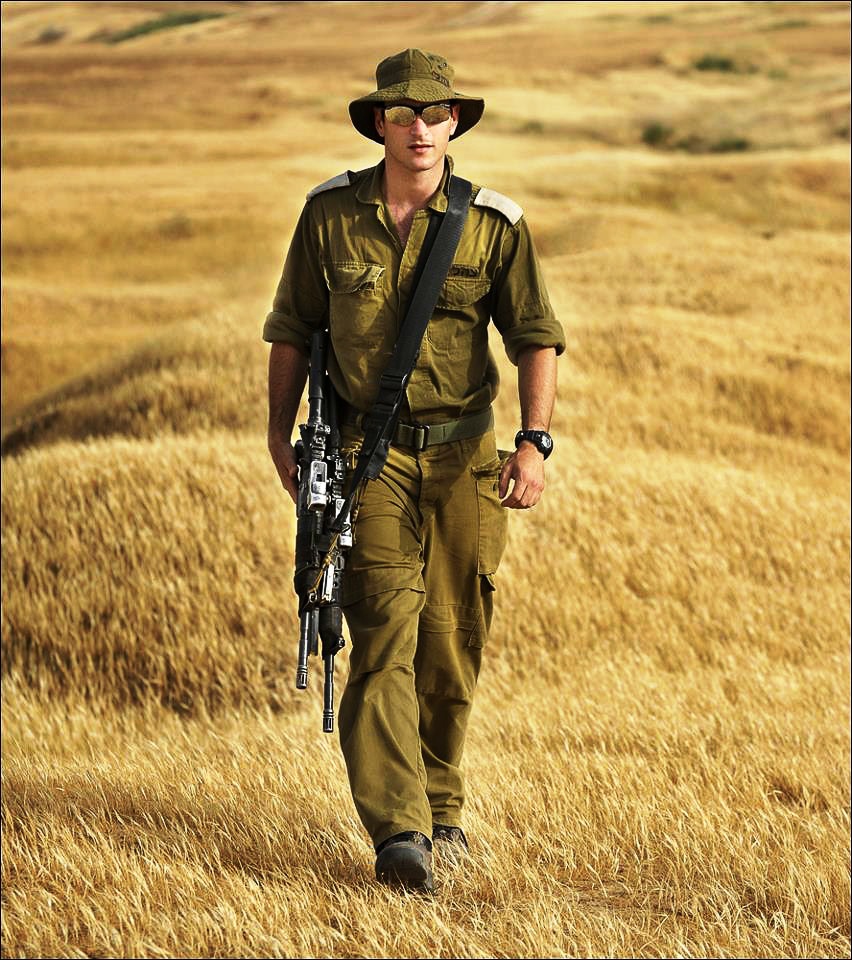 Click on a picture to enlarge it
Click on a picture to enlarge it
The Israel Defense Forces, commonly known in Israel by the Hebrew acronym Tzahal (צה”ל), are the military forces of the State of Israel. They consist of the ground forces, air force and navy. It is the sole military wing of the Israeli security forces, and has no civilian jurisdiction within Israel. The IDF is headed by its Chief of General Staff, the Ramatkal, subordinate to the Defense Minister of Israel; Rav Aluf Benny Gantz has served as Chief of Staff since 2011.
An order of Defense Minister David Ben-Gurion on 26 May 1948, officially set up the Israel Defense Forces as a conscript army formed out of the paramilitary group Haganah, incorporating the militant groups Irgun and Lehi. The IDF served as Israel’s armed forces in all the country’s major military operations—including the 1948 War of Independence, 1951–1956 Retribution operations, 1956 Sinai War, 1964–1967 War over Water, 1967 Six-Day War, 1967–1970 War of Attrition, 1973 Yom Kippur War, 1976 Operation Entebbe, 1978 Operation Litani, 1982 Lebanon War, 1982–2000 South Lebanon conflict, 1987–1993 First Intifada, 2000–2005 Second Intifada, 2002 Operation Defensive Shield, 2006 Lebanon War, 2008–2009 Gaza War and others. The number of wars and border conflicts in which IDF was involved in its short history, makes it one of the most battle-trained armed forces in the world. While originally the IDF operated on three fronts—against Lebanon and Syria in the north, Jordan and Iraq in the east, and Egypt in the south—after the 1979 Egyptian–Israeli Peace Treaty, it has concentrated its activities in southern Lebanon and the Palestinian Territories, including the First and the Second Intifada.
The Israel Defense Forces differs from most armed forces in the world in many ways. Differences include the conscription of women and its structure, which emphasizes close relations between the army, navy and air force. Since its founding, the IDF has been specifically designed to match Israel’s unique security situation. The IDF is one of Israeli society’s most prominent institutions, influencing the country’s economy, culture and political scene. In 1965, the Israel Defense Forces was awarded the Israel Prize for its contribution to education. The IDF uses several technologies developed in Israel, many of them made specifically to match the IDF’s needs, such as the Merkava main battle tank, high tech weapons systems, the Iron Dome, Trophy countermeasure, and the Galil and Tavor assault rifles. The Uzi submachine gun was invented in Israel and used by the IDF until December 2003, ending a service that began in 1954. Following 1967, the IDF has had close military relations with the United States, including development cooperation, such as on the F-15I jet, THEL laser defense system, and the Arrow missile defense system.
History
The IDF traces its roots to Jewish paramilitary organizations in the New Yishuv, starting with the Second Aliyah (1904 to 1914). The first such organization was Bar-Giora, founded in September 1907. It was converted to Hashomer in April 1909, which operated until the British Mandate of Palestine came into being in 1920. Hashomer was an elitist organization with narrow scope, and was mainly created to protect against criminal gangs seeking to steal property. During World War I the forerunners of the Haganah/IDF were the Zion Mule Corps and the Jewish Legion, both of which were part of the British Army. After the Arab riots against Jews in April 1920, the Yishuv’s leadership saw the need to create a nationwide underground defense organization, and the Haganah was founded in June of the same year. The Haganah became a full-scale defense force after the 1936–1939 Arab revolt in Palestine with an organized structure, consisting of three main units—the Field Corps, Guard Corps and the Palmach. During World War II the successor to the Jewish Legion of World War I was the Jewish Brigade.
The IDF was founded following the establishment of the State of Israel, after Defense Minister and Prime Minister David Ben-Gurion issued an order on 26 May 1948. The order called for the establishment of the Israel Defense Forces, and the abolishment of all other Jewish armed forces. Although Ben-Gurion had no legal authority to issue such an order, the order was made legal by the cabinet on 31 May.
The two other Jewish underground organizations, Irgun and Lehi, agreed to join the IDF if they would be able to form independent units and agreed not to make independent arms purchases. This was the background for the dispute which led to the Altalena Affair, when following a confrontation regarding the weapons it brought resulted in a battle between Irgun members and the newly created IDF. It ended when the ship was shelled. Following the affair, all independent Irgun and Lehi units were either disbanded or merged into the IDF. The Palmach, a strong lobby within the Haganah, also joined the IDF with provisions, and Ben Gurion responded by disbanding its staff in 1949, after which many senior Palmach officers retired, notably its first commander, Yitzhak Sadeh.
The new army organized itself during the 1948 Arab–Israeli War when neighbouring Arab states fought Israel. Twelve infantry and armored brigades formed: Golani, Carmeli, Alexandroni, Kiryati, Givati, Etzioni, the 7th and 8th armored brigades, Oded, Harel, Yiftach and Negev. After the war, some of the brigades were converted to reserve units, and others were disbanded. Directorates and corps were created from corps and services in the Haganah, and this basic structure in the IDF still exists today.
Immediately after the 1948 war, the Israel Defense Forces shifted to low intensity conflict against Arab Palestinian guerrillas. In the 1956 Suez Crisis, the IDF’s first test of strength after 1949, the new army proved itself by capturing the Sinai Peninsula from Egypt, which was later returned. In the 1967 Six-Day War, Israel conquered the Sinai Peninsula, Gaza Strip, West Bank (including East Jerusalem) and Golan Heights from the surrounding Arab states, changing the balance of power in the region as well as the role of the IDF. In the following years leading up to the Yom Kippur War, the IDF fought a war of attrition against Egypt in the Sinai and a border war against the PLO in Jordan, culminating in the Battle of Karameh.
The surprise of the Yom Kippur War and its aftermath completely changed the IDF’s procedures and approach to warfare. Organizational changes were made[by whom?] and more time was dedicated to training for conventional warfare. However, in the following years the army’s role slowly shifted again to low-intensity conflict, urban warfare and counter-terrorism. It was involved in the Lebanese Civil War, initiating Operation Litani and later the 1982 Lebanon War, where the IDF ousted Palestinian guerilla organizations from Lebanon. Palestinian militancy has been the main focus of the IDF ever since, especially during the First and Second Intifadas, Operation Defensive Shield and the Gaza War, causing the IDF to change many of its values and publish the IDF Spirit. The Shia organization Hezbollah has also been a growing threat, against which the IDF fought an asymmetric conflict since 1982 until 2000, as well as a full-scale war in 2006.
Also see Women In The Israel Defense Forces:
https://www.solveisraelsproblems.com/women-in-the-israel-defense-forces/#more



